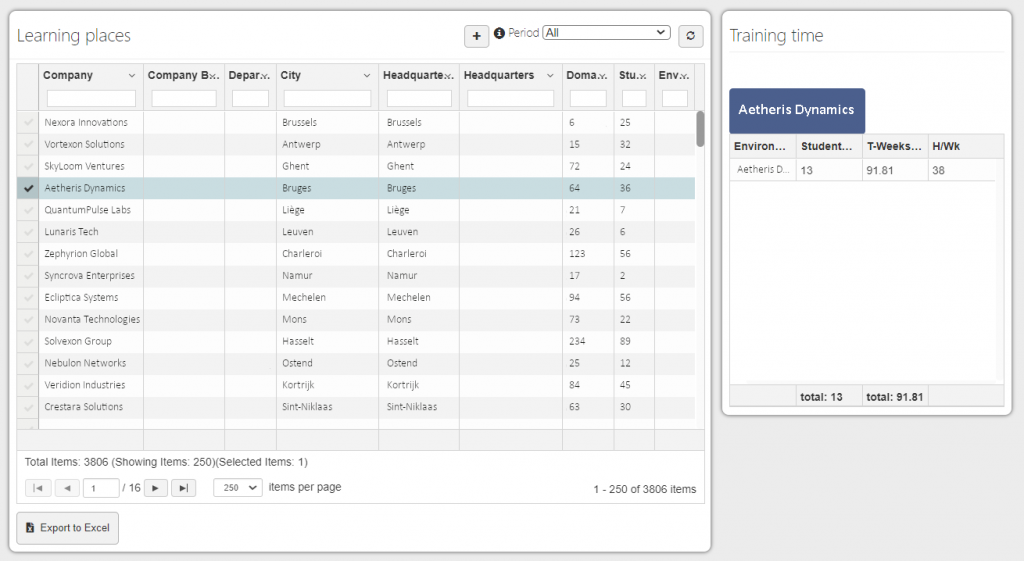Internships have become an integral part of competency based pedagogy in higher education. Learning through internships is valuable as it provides students opportunities to acquire real-world experience, to apply theoretical knowledge, and to build networks within their chosen industries.
Guaranteeing that the time and effort spent creating and maintaining internship programs are providing value to students, academic institutions, and employers is often overlooked, however. Transparency and clear processes are needed to monitor and measure internships success and impact is crucial for administration.
This article explores best practices in internship management, effective assessment strategies, and the role of tools like a Learning Management System (LMS) in achieving these goals.
Why Measure Internship Impact
Academic institutions often invest a substantial amount of time and effort in establishing internship programs, identifying suitable placements, and guiding students throughout their experiences. These efforts are far from trivial, and how resources are allocated in this process is of great significance. This is why transparency is a fundamental element in managing internship programs effectively.
It is essential for academic institutions to measure internship impact for several key reasons:
Providing Robust Support for Students. Institutions have a responsibility to ensure that internships contribute meaningfully to students’ professional and personal development. By assessing internship outcomes, teachers and supervisors can gain valuable insights into how students are advancing in their studies and whether they encounter challenges or require individual support.
Enhancing Program Value. By systematically assessing the outcomes of internships, higher education institutions can identify gaps in current offerings and implement strategies for improvement. Data gathered from these evaluations can guide educators in refining their teaching methodologies and aligning course content with industry requirements. Additionally, administrative bodies can utilize this information to streamline processes, allocate resources more efficiently, and develop internship programs that align with institutional goals and student needs.
Strengthening Employer Partnerships. Collaboration with industry partners is a cornerstone of successful internship programs and broader academic activities. Academic institutions need to maintain and analyze their partnership networks to ensure these collaborations provide mutual value. Evaluating the impact of specific partnerships allows institutions to understand which relationships are most beneficial, fostering stronger ties with high-value employers and enabling the development of long-term, mutually advantageous collaborations.
Supporting Accreditation Efforts. Many accrediting bodies require evidence of effective internship programs as part of their evaluation criteria. Transparent and well-documented processes for assessing the impact of internships not only facilitate compliance with accreditation standards but also demonstrate the institution’s commitment to providing high-quality educational experiences.
How to measure internship success with an LMS
When evaluating the impact of an internship program, it is considered a best practice to combine a variety of metrics and measurements, incorporating both quantitative and qualitative data. This comprehensive approach ensures a deeper understanding of the program’s effectiveness. A learning management system (LMS) often serves as a pivotal tool for collecting, managing, and analyzing relevant data on internships, offering a structured way to track key outcomes and insights.
An internship tracking system, such as Workseed, provides invaluable support for educators and administrators in monitoring and managing internship activities. By leveraging such a system, institutions can streamline processes and enhance their oversight capabilities.
Centralized Documentation. One of the most significant features of a learning management system designed for internships is its ability to consolidate all documentation into a single, secure digital portal. This repository includes essential legal documents and contracts, as well as assignments, evaluations, portfolios, learning diaries, and detailed information about internship placements. Centralizing this information not only makes it easier and faster to locate necessary materials but also ensures compliance with data security standards and personal data protection regulations. Additionally, this centralized structure minimizes the risk of errors or mismanagement of sensitive information.
Transparent Monitoring. When students document their learning experiences on an LMS and receive feedback and formative assessments through the same platform, it fosters greater transparency and facilitates continuous progress tracking. This approach enables educators to quickly identify challenges and provide timely support while also refining the pedagogical tools and resources available to students. For administrators, this transparency aids in a more holistic evaluation of internship programs, allowing for targeted improvements and long-term development.
Comprehensive Data on Internship Providers. Building and maintaining a robust network of industry partners is a fundamental aspect of any academic institution’s mission. An LMS can assist in tracking and managing relationships with companies offering internship placements. For example, Workseed’s learning place registry simplifies the process of adding new internship sites and updating their information. This feature enables administrators to monitor the quality and breadth of their network, evaluate the institution’s impact by geographic location or industry sector, and identify opportunities for growth and strategic partnerships.

By integrating these capabilities, systems like Workseed not only enhance the efficiency of internship program management but also makes it possible to measure internship impacts to drive continuous improvement in both educational outcomes and industry engagement.
Do you want to improve internship management in your department?
Workseed is a learning management system specifically designed for work-based learning in higher education and technical and vocational education and training (TVET). It offers tools tailored to competency-oriented pedagogical models and supports the monitoring of learning that occurs outside the classroom environment.
With Workseed, institutions can achieve greater transparency in evaluating the impact of individual study modules, the quality of learning materials, and the strength of industry networks. It empowers students to track their progress, assists teachers in monitoring their students’ development, and enables administrators to enhance internship programs effectively.
At JAMK University of Applied Sciences, Workseed LMS transformed internship management processes. By implementing this advanced system, JAMK automated administrative tasks, streamlined communication, and significantly improved workflows to track studies and measure internships. Read the full reference story here.
To explore how Workseed can optimize internship management in higher education, discover more about our features here.
If you’d like to see how Workseed can elevate internship programs at your institution, we invite you to book a product demonstration with our experts here. We’ll show you Workseed in action and help you identify strategies to enhance internship management in your department.










